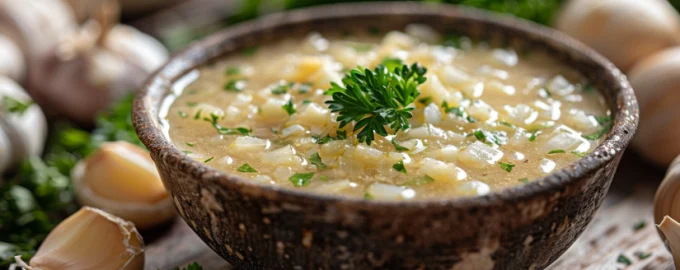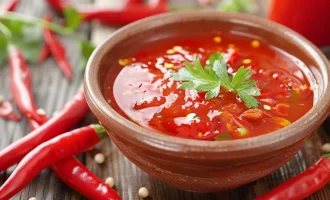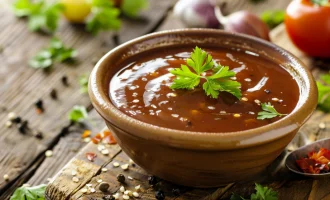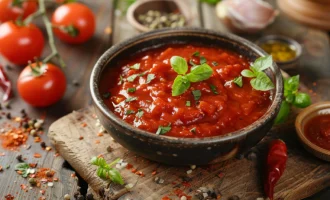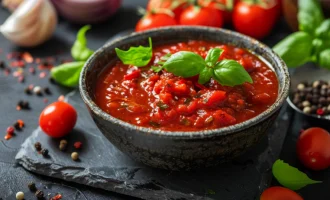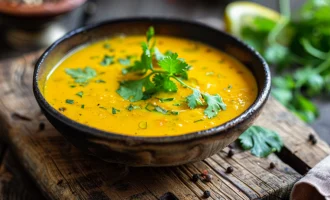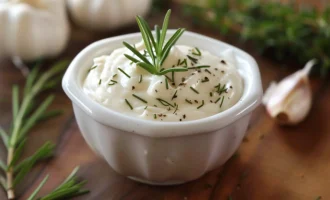Garlic sauce, known for its pungent flavor and creamy texture, has roots in various culinary traditions around the world. From the Middle East’s toum to Europe’s aioli, different versions of garlic sauce have been savored for centuries. Traditionally, these sauces were made using a mortar and pestle to crush garlic into a paste, then mixed with oil or other emulsifiers to create a rich, flavorful condiment. Garlic sauce is versatile, serving as a spread for sandwiches, a dip for vegetables and meats, or a complement to grilled foods, particularly chicken, beef, and seafood.
- Fresh garlic cloves 30 g
- Olive oil 120 ml
- Lemon juice 30 ml
- Salt 5 g
- Egg white (optional, for emulsification) 1 large
- Peel the garlic cloves and remove any green sprouts (which can be bitter). Crush the cloves slightly with the flat side of a knife to make them easier to blend.
- In a food processor, combine the garlic cloves and salt. Pulse until the garlic is finely minced. If you’re using an egg white for a thicker sauce, add it at this stage.
- With the processor running, slowly drizzle in the olive oil. This process should take a few minutes; adding the oil gradually helps to create a smooth, creamy texture.
- Once the mixture has emulsified and reached your desired consistency, add the lemon juice and pulse a few more times to incorporate. Taste and adjust the seasoning as needed.
- Transfer the sauce to a bowl, cover, and refrigerate for at least 30 minutes before serving. This allows the flavors to meld together.
Storage Tips
Garlic sauce can be stored in an airtight container in the refrigerator for up to one week. The acidity from the lemon juice and the oil helps to preserve the sauce, but it’s best enjoyed fresh for its vibrant flavor.
Useful Properties of the Main Ingredient
Garlic is renowned for its health benefits, including its ability to boost the immune system, reduce blood pressure, and lower the risk of heart disease. It’s also a powerful antioxidant, which can combat oxidative stress and may slow down the aging process. Garlic’s active compound, allicin, is responsible for its distinctive taste and many of its health benefits.
Interesting Facts
- Garlic has been used for both culinary and medicinal purposes for thousands of years, dating back to ancient Egypt.
- The strength of garlic sauce can vary greatly depending on the type of garlic used and how it’s prepared. Young or “wet” garlic tends to be milder than older, more mature bulbs.
- In some cultures, garlic sauce is believed to have protective properties, warding off bad spirits and promoting good health.
Homemade garlic sauce is a testament to the power of simple ingredients, transforming the humble garlic clove into a rich, versatile condiment that can elevate any dish. Whether you’re spreading it on a sandwich, dipping grilled meats, or using it as a base for other sauces, garlic sauce is a delicious way to enjoy the many benefits of garlic.

